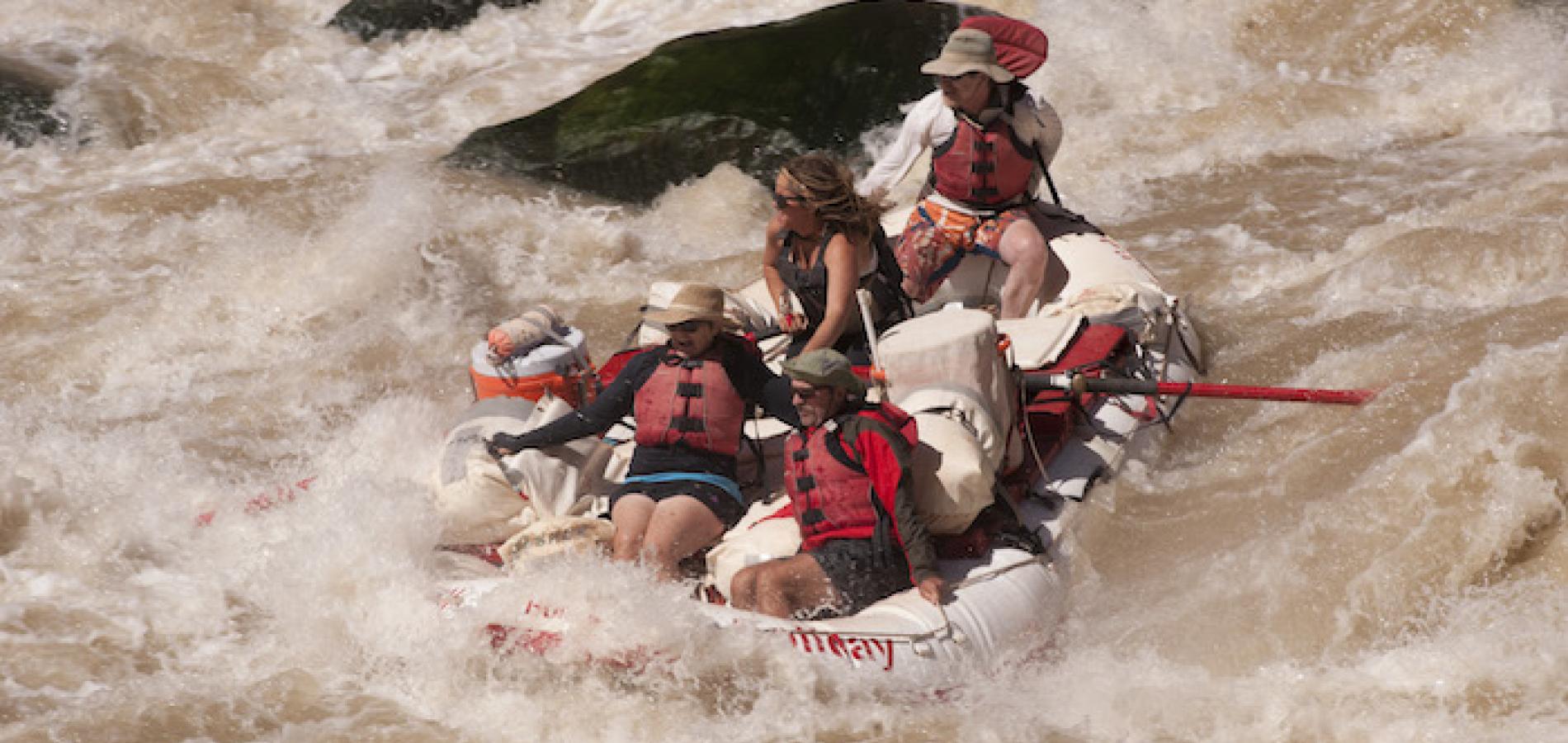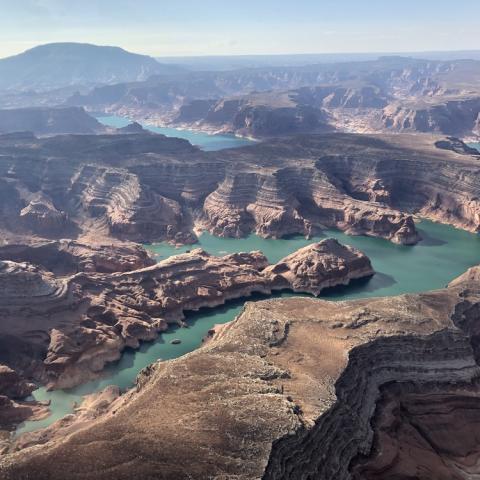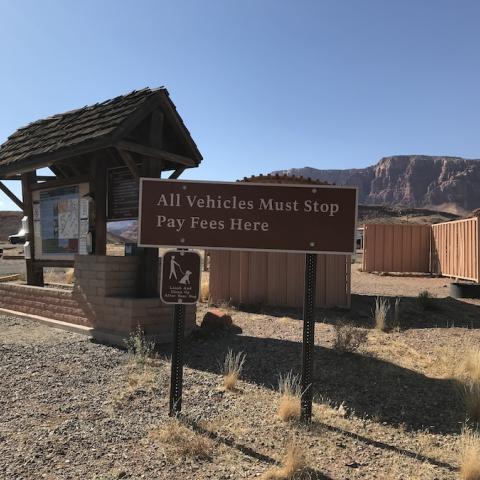I went for a float last week.
Six glorious, sun-drenched days down the Green and Colorado rivers through Canyonlands National Park in Utah. No cellphones, keyboards, motors, or engines, just some R&R with a boisterous, fun-loving group of fellow park travelers combined with some field testing of the National Park System.
Through Stillwater and Cataract canyons and on to Lake Powell we drifted, lazily at times, bucking rapids at others. Our flotilla of rubber rafts crashing through waves of water kicked up by rocks and boulders in the rivers. Soaring high above were cliffs of the Colorado Plateau, crusty and craggy formations tagged Chinle and White Rim, Hornaker Trail and Moenkopi, sculpted by eons of flowing, tumbling, boiling, and foaming currents. Some of us climbed up and through them, following ancient corridors into today's Maze District of Canyonlands, where we marveled at sandstone minarets that some long ago giant might have formed with ancestral Play-Doh.
As much as the float offered downtime, it also gave time for thought about the park system and where it's heading. While there, on the wet and muddy floor of Canyonlands, all seemed right with the system, that's not necessarily so. Today, just 11 months ahead of the National Park Service's centennial, visitation is up across the park system. While that traffic reflects a much-welcome interest in and appreciation of the parks, it's not without a toll and a hidden warning.
Yellowstone National Park reached 3 million visitors in August, prompting Superintendent Dan Wenk to express not only surprise by the boost in visitors but also to say, “We will be looking at what this means for the future and what we can do to improve visitor experiences while still protecting park resources.”
Across the country in Maine, Acadia National Park officials also are grappling with higher visitor numbers, and new group events that didn't exist a decade ago (cyclists trying to pedal the park roads from point to point in record times, for instance). In Utah, the state Highway Patrol actually closed access to Arches National Park during the Memorial Day Weekend due to traffic backed up onto Highway 191 while trying to enter the park.
“They have fewer dollars and fewer people to work on this,” David MacDonald, president of Friends of Acadia, told the Bangor Daily News. “It is making the park staff’s job harder. ... The park is managing for dozens and dozens of uses that didn’t exist 10 years ago.”
At Gulf Islands National Seashore sprawled across the coastlines of Florida and Mississippi, the superintendent has 16 fewer permanent positions than he did five years ago. At Zion National Park in Utah, the superintendent says visitation has grown 65 percent since 2010, but staffing levels have failed to keep pace.
No doubt similar stories can be recited across the park system. Yet Congress continues to be stingy, and a plan for reversing the trend of fewer staff saddled with more tasks is missing, or at least out of sight.
While the centennial is a time to celebrate both the National Park Service and the parks, how will it play out? Are this year's traffic trends an indication of how many tens of millions of visitors will be park-bound next year? While there has been talk out of NPS headquaters about putting more boots on the ground and sprucing up the parks to welcome those millions, individual parks seemingly will be hard-pressed to do so.
"We expect to have less money, not more, in 2016 so it's highly unlikely we'll have additional seasonals, regardless of need," says one superintendent.
Back on the river, these concerns were buried deep in the background as we drifted on the currents, counting great blue herons and desert bighorns, marveling over pictographs and granaries from long ago civilizations. But the issues are bubbling back to the surface and will need solutions if the centennial is to be a success.














Comments
A few days ago in Grant Teton, I heard a thought provoking comment from a ranger. She pointed to the Enabling Act inscribed above the information desk at the new VC in Moose and asked, "Are we missing the boat in this Centennial year by urging more people to visit our parks, but failing to try to educate them on why these places are here and what we all must do to try to protect them?"
Good question.
With an increase in 2015, a 33% additional increase requested in 2016 and substantial increases in entrance fees, why does that one superintendent think the NPS will have less money next year?
PS Tell us more about the trip. More pictures.
Ditto ecbuck: I'd like to read more about your trip and see more photos.
Agreed. More people, increased fees... so please explain.
EC, I'm waiting to hear back, but a couple things come to mind:
* Much of the proposed budget increase was for infrastructure needs, not personnel. The president's FY16 budget request...which Congress likely will ignore...seeks $150 million for such projects. Overall, the request was for ~$433 million above FY15 levels.
* It takes a while to get higher fees into the system. And not all parks increased their entrance fees.
Seems like if the total request was for $433 million and $150 is infrastructure that leaves alot for personnel.
Another question, are the "fees" outside the budgeted amount and how much did they total in 2014?
EC, the rest of the story...
"Congress just passed a CR which (even though this was not widely reported) included an across the board reduction of 0.2108%. That lasts, of course, through December 11.
"The Administration's proposed centennial bill, which would increase funding for FY16, has zero chance of passing the Congress -- especially with the disarray in the House now.
"Is there any reason to think that the "normal" administration budget will pass as requested? It seems highly unlikely. Unless there's an 11th hour deal between Boehner and Obama, that can then pass both houses of Congress, we're back into sequestration cuts, or "caps."
"According to http://federalnewsradio.com/sequestration/2015/10/sequestration-effects-..., the 2014 Budget Control Act reduced the defense caps by $53.9 billion and the non-defense caps by $36.6 billion, and restored $44.8 billion to both categories last year. For 2015, Congress reduced the defense cap by $44.7 billion and the non-defense cap by $27.6 billion from the original BCA levels. But lawmakers took no action around budget reductions as called for under the Budget Control Act for 2016 to 2021.
"The President has also proposed a 1.3% federal employee pay raise to take effect in January 2016. Unless Congress overrides that, it will happen. That's been the pattern the last year and most observers expect it to occur again. That would divide into a 1% across the board increase and a 0.3% locality increase for some areas (not including mine).
"So -- the very most fiscally optimistic optimistic scenario I can imagine for park operating budgets would be a CR for the entire year, with or without a small across the board decrease. Then we'd most likely have to absorb the pay increase out of our budgets, as it's also hard to imagine Congress would provide an increase for that purpose."
One other thing: higher entrance fees can't normally be used for permanent employee salaries...they are used typically for campground improvements, restrooms, etc.